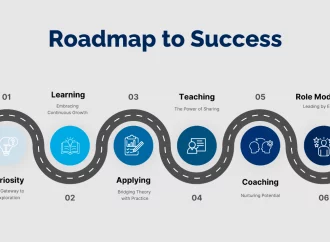Welcome to the exciting world of technology in education! Gone are the days of dusty chalkboards and scratchy overhead projectors. Today’s classrooms are filled with shiny new Chromebooks, interactive whiteboards, and digital content that is changing the face of American education. In this blog post, we’ll explore how technology is transforming teaching and learning in
Welcome to the exciting world of technology in education! Gone are the days of dusty chalkboards and scratchy overhead projectors. Today’s classrooms are filled with shiny new Chromebooks, interactive whiteboards, and digital content that is changing the face of American education. In this blog post, we’ll explore how technology is transforming teaching and learning in schools across the country, from K-12 to higher ed. So buckle up and get ready for a wild ride through the brave new world of educational innovation!
The History of American Education
The history of American education is long and varied, but one thing has remained constant: the importance of technology in the classroom. From early experiments with film and radio to the introduction of the personal computer, technology has always played a role in shaping how Americans learn.
Today, technology is more important than ever in the classroom. With the rise of digital learning tools like Chromebooks and tablets, students are able to access information and resources like never before. And as more schools move towards blended and online learning models, it’s clear that technology is revolutionizing American education.
So how did we get here? Let’s take a look at the history of American education, from the early days of chalkboards and textbooks to today’s cutting-edge classrooms.
Early Education: Chalkboards and Textbooks
The early days of American education were focused on rote memorization and recitation. Students spent their days in rows of desks, copying down lessons from chalkboards or textbooks. This method of instruction was designed to prepare students for work in factories or other manual labor jobs.
However, some educators began to experiment with new teaching methods that incorporated elements of play. In 1837, Calvin Brown introduced “object lessons” into his classroom, using everyday objects to teach his students about different concepts. This approach helped make learning more interactive and engaging for students.
The introduction of film and radio also changed the way instruction was delivered
Technology in the Classroom
Technology is playing an increasingly important role in American education. Today, more and more classrooms are equipped with computers, laptops, and other digital devices. And as technology becomes more affordable and user-friendly, its use in the classroom is only likely to increase.
There are many advantages to using technology in the classroom. For one, it can help students learn more effectively. Online resources such as Khan Academy and Learning Ally offer engaging, interactive ways for students to learn new concepts. In addition, digital devices can provide a much-needed boost to struggling learners or those with special needs. By providing texts in an audio format or offering text-to-speech support, these tools level the playing field and give all students an equal opportunity to succeed.
In addition to improving learning outcomes, technology can also make the learning process more fun and engaging for students. Games, simulations, and other immersive activities can capture kids’ attention and get them excited about learning. What’s more, by allowing students to create their own content or share their work with peers online, technology fosters creativity and collaboration.
Of course, incorporating technology into the classroom is not without its challenges. Teachers need time to learn how to use new tools effectively and some schools lack the resources to purchase the latest devices or software. However, as technology continues to evolve, it’s likely that these obstacles will eventually be overcome—leaving us with an even more powerful tool for education than we have today
The Pros and Cons of Technology in Education
When it comes to technology in education, there are both pros and cons to consider. On the one hand, technology can provide students with greater access to learning materials and resources. It can also help connect students with each other and their instructors from anywhere in the world. Additionally, tech tools can automate some of the more tedious aspects of learning, like taking notes or tracking progress.
On the other hand, technology can be a distraction for some students, pulling them away from the task at hand. Additionally, not all students have access to quality tech resources, which can create a digital divide among learners. Additionally, over-reliance on technology can lead to problems when devices crash or malfunction.
Ultimately, it’s up to educators to weigh the pros and cons of technology in their classrooms and decide what works best for their students. With careful consideration and implementation, technology can be a powerful tool for enhancing learning experiences.
How Technology is Changing Education
A few decades ago, American classrooms looked very different than they do today. Students were armed with pencils and paper, and lessons were delivered via lectures and textbooks. But as technology has advanced, so has the way we teach and learn. Today, interactive whiteboards, laptops and tablets are commonplace in K-12 classrooms across the country, and students are using them to engage in new ways with their coursework.
Here are just a few of the ways that technology is changing education:
1. Online learning: More and more students are taking advantage of online learning opportunities. With internet-based courses, students can log in and complete their work on their own time, at their own pace. This type of flexible learning is ideal for busy families or students who have other commitments outside of school.
2. Flipped classrooms: In a traditional classroom setting, students listen to lectures from their teachers and then complete assignments at home. But in a flipped classroom model, students watch lectures at home (often via video) and then come to class ready to engage in hands-on activities or discussions. This approach helps ensure that all students are getting the most out of each lesson.
3. Gamification: Many educators are using gaming elements in their classrooms to make learning more fun and engaging for students. By adding points, levels and rewards to lessons, students are motivated to keep progressing through the material. Games can also be used to assess student understanding in a low-stakes
The Future of American Education
It is no secret that technology has drastically changed the landscape of almost every industry, and education is no different. American education is currently in the midst of a major overhaul, as new technologies are being adopted in order to better prepare students for the modern world.
One of the biggest changes that has come about in recent years is the shift from traditional chalkboards to digital screens. This change has been made possible by advances in projector and display technology, which have made it possible to create large, high-quality displays that can be used for educational purposes. In many cases, these displays are even interactive, meaning that students can interact with them directly in order to learn more effectively.
Another big change that has come about due to technology is the way in which educators are able to assess their students. In the past, educators would often have to rely on paper-based methods of assessment, which could be both time-consuming and inaccurate. However, with the advent of online assessment tools, educators can now get real-time feedback on how well their students are doing. This means that they can quickly identify areas where students need more help, and adapt their teaching methods accordingly.
Of course, it’s not just teachers who are benefitting from these changes – students are too. With more engaging and interactive learning experiences, students are more likely to stay motivated and engaged in their studies. Additionally, online resources make it easier than ever for students to get help when they need it




















Leave a Comment
Your email address will not be published. Required fields are marked with *